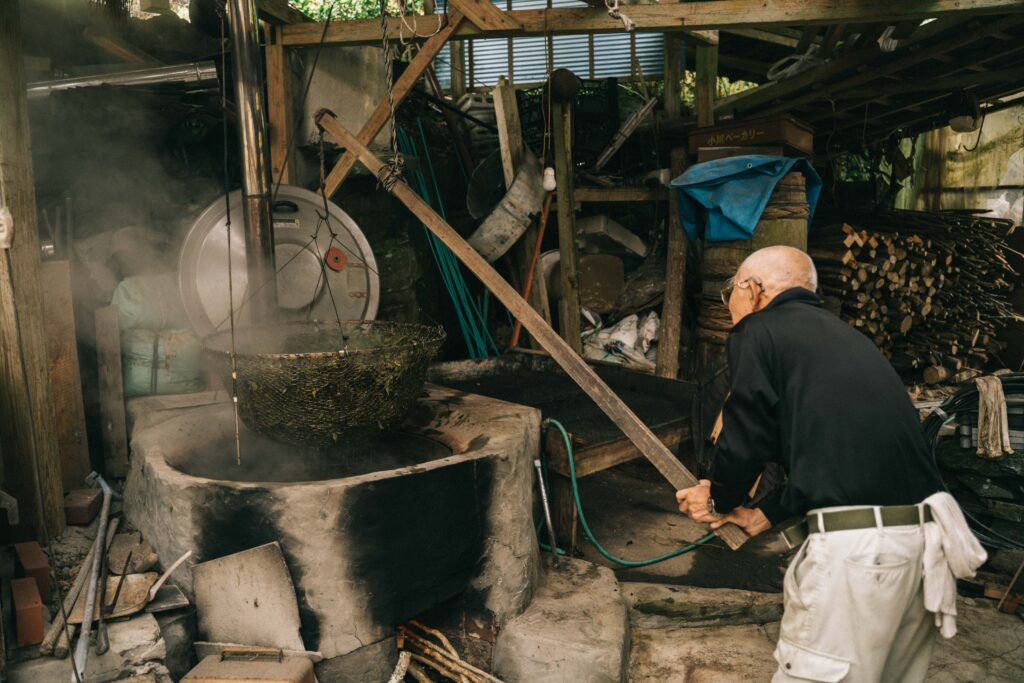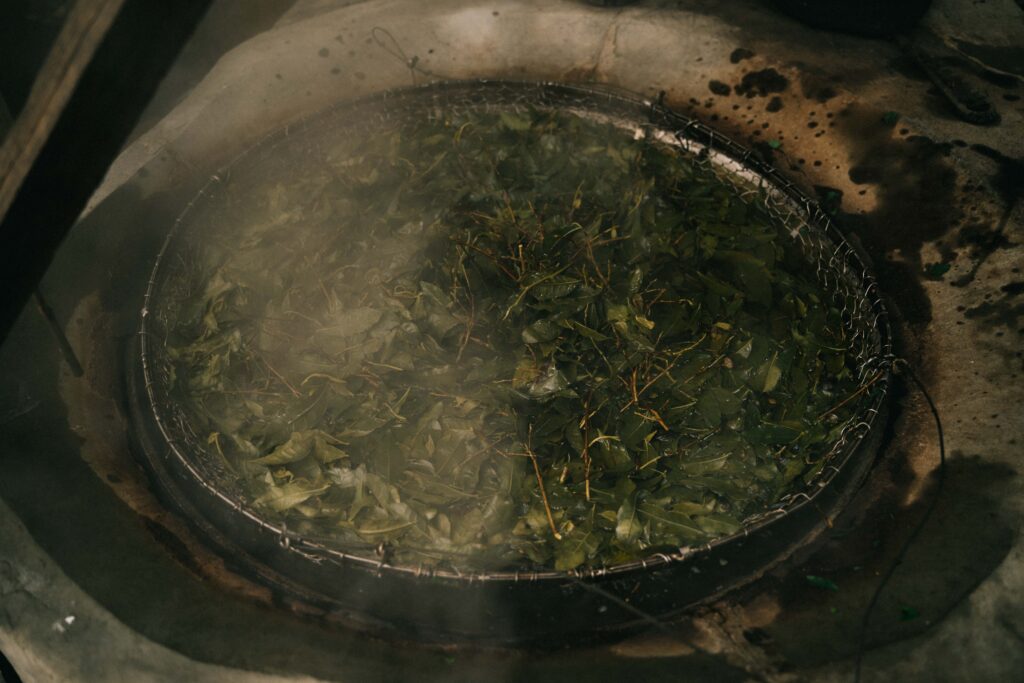
Awa Bancha in Yamashiro town
Wararu Okada
(Farmer in Miyoshi City)
Mr. Okada has been growing tea for generations in Yamashiro-town, Miyoshi City, famous for tea production. Yamashiro-town is known for its sencha (green tea) production, and he produces lactic acid-fermented tea called "Awa Bancha.” This type of tea product is only found in a few places in Japan, mainly in the Shikoku Mountains.
First, Awa Bancha is characterized by its picking time. Normally, tea sprouts are picked around April; however, for Awa Bancha, tea leaves remain until the end of July. Tea leaves contain more nutrients than sprouts and are more susceptible to lactic acid fermentation.


The tea leaves were boiled immediately in a cauldron. The samples were then placed in boiling water, stirred, and boiled. The large stems and damaged leaves were removed from the boiled tea leaves.


As a unique process in Awa Bancha, tea leaves are ground using a rubbing machine. They were rubbed under firm pressure. By scratching them, they can ferment more quickly.


They were soaked tightly in a tub and weighed for fermentation for 4–5 weeks. This is a method of lactic acid fermentation using microorganisms. Tea leaves have a white foam on them immediately after grinding; however, it gradually disappears. Finally, the tea leaves were dried in the sun to complete the process.

Awa Bancha contains many umami ingredients and has a mild flavor with hints of sourness and sweetness. In Tokushima, the Awa Bancha from Kamikatsu-town and Naka-town are well known. However, the one here is also delicious. The type of lactic acid bacteria differs from that in other production areas; therefore, they can be compared. Please refer to Awa Bancha, produced by Mr. Okada.


He cultivated Actinidia arguta, the fruit of which resembles kiwifruit.


